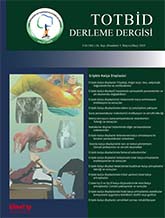
Developmental hip dysplasia is one of the most common causes of secondary osteoarthritis. Pain and functional limitation caused by end-stage hip osteoarthritis are treated with total hip arthroplasty. Morphological changes in the acetabulum and femur due to this disease cause difficulties in the part of the surgery related to bone and components. On the other hand, the high limb length discrepancy and soft tissue contractures are important issues for the success of the surgery. The long-term success of hip arthroplasty depends on the placement of the components in the correct position. Reducing wear by avoiding edge loading and reducing dislocation rates by adjusting the combined anteversion should be considered when placing the component. Robotic assistance in total hip arthroplasty can be considered the most important development in this field in the last 20 years. In almost all studies comparing robot-assisted applications with conventional techniques and including all primary and secondary applications, it is revealed that robotic assistance enables more precise placement of components and that the placement and leg length are adjusted more sharply in the safe area. There are many studies indicating that robotic assistance is beneficial in this special group of patients with hip dysplasia, where femoral and acetabular bone and leg length adjustment is more difficult, the patient`s age is younger and the expectation level is higher. We expect that growing study groups and extended follow-up periods will reveal the level of this benefit more clearly over time and that robotic-assisted total hip arthroplasty will consolidate its place in this field.